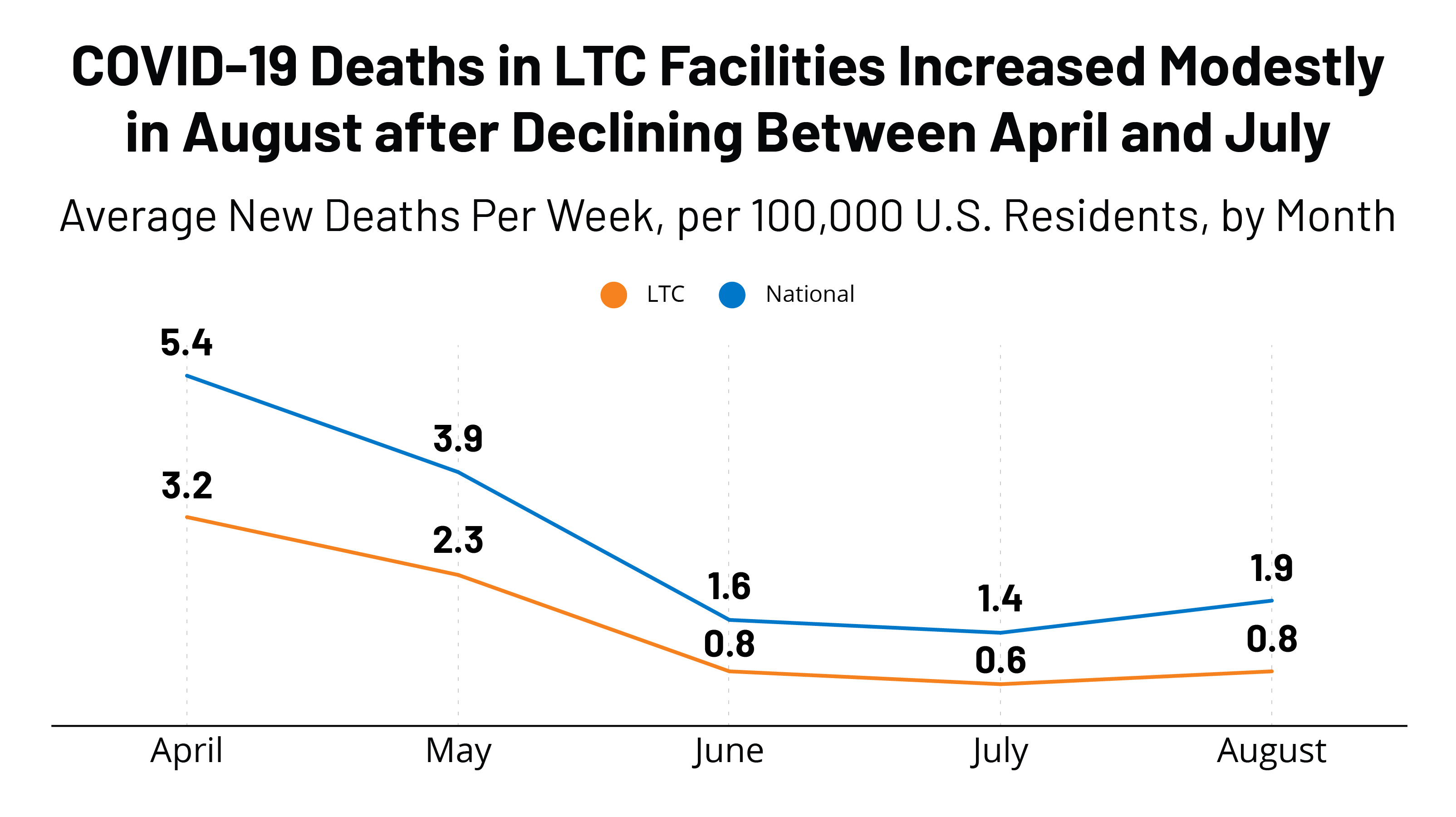
Long-term care (LTC) facilities have experienced a disproportionate share of deaths during the COVID-19 pandemic. The most recently available data show long-term care facilities making up 8% of all coronavirus cases, but more than 40% of all COVID-19 deaths. This analysis evaluates trends of long-term care cases and deaths between April and August 2020 to evaluate where and when the pandemic has hit long-term care facilities the hardest, how the share of cases and deaths attributed to long-term care facilities has changed over time, and whether states continue to report new cases and deaths in these facilities at the same rate now as they did back in April.
This analysis presents trends in long-term care data for states that have reported long-term care cases (35 states) and deaths (36 states) since early April 2020 (see methods and limitations for more details). Federally available, facility-specific data was not used for this analysis because facilities were not required to begin reporting until May 8, which would miss peaks in cases and deaths in April and May. Key findings from our analysis include:
- Nationally, reported cumulative cases and deaths in long-term care facilities have increased over time, increasing from 10,000 deaths and 50,000 cases in mid-April to over 70,000 deaths and nearly 400,000 cases in mid-August. However, trends in cases and deaths vary notably across states. (Interactives 1 and 2). Some states, such as New York and Massachusetts, experienced a surge of long-term care cases and deaths that peaked and plateaued much earlier than other states where long-term cases and deaths were first reported in later months and have continued to climb, such as Texas and North Carolina (Interactives 1 and 2).
- Nationally, the share of deaths attributed to LTC facilities has stayed relatively constant since May, but the share of cases attributed to LTC facilities has decreased over time (Figures 1 and 2). The decreasing share of cases attributed to long-term care facilities is likely due broader availability of testing that contributed to the identification of more cases in the general population, particularly in younger age groups, in June and July.
- Nationally, the number of new LTC cases and deaths peaked in April, decreased in May and June, before rising in July, followed by a rise in new LTC deaths in August (Figure 3 and Table 2). These patterns of new LTC cases and deaths generally follow the patterns of cases and deaths that we have seen nationally, indicating a strong connection between community spread with cases and deaths in long-term care facilities. Recent analysis on cases in hotspot states supports this notion as well. A key distinction here is the number of new LTC cases per 100,000 residents in July and August was much lower than new LTC cases in April and May, which differs from the national pattern where new cases in the summer months were higher than new cases in April and May. (Figure 3).
"term" - Google News
September 01, 2020 at 05:02PM
https://ift.tt/3jCuGET
Key Questions About the Impact of Coronavirus on Long-Term Care Facilities Over Time - Kaiser Family Foundation
"term" - Google News
https://ift.tt/35lXs52
https://ift.tt/2L1ho5r
Bagikan Berita Ini

















0 Response to "Key Questions About the Impact of Coronavirus on Long-Term Care Facilities Over Time - Kaiser Family Foundation"
Post a Comment